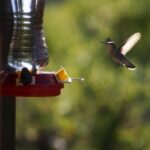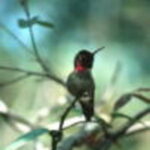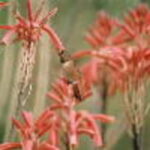Tennessee is known for the beautiful Smoky Mountains, country music in Nashville and fun places such as Dollywood, but none of these places are as important or popular with some of the smallest visitors as a backyard garden or a red feeder containing a simple sugar syrup. Of course, these small visitors to Tennessee are the hummingbirds that call this state home, at least for a while.
There have been seven species documented in Tennessee with two species, the Ruby-throated Hummingbird and the Rufous Hummingbird being listed as regular visitors. The other five species, which includes the Black-chinned Hummingbird, the Anna’s Hummingbird, the Calliope Hummingbird, the Broad-tailed Hummingbird and the Allen’s Hummingbird, are considered accidental visitors to Tennessee, which means that they have been documented in the state, but they are not commonly seen every year in larger populations.
Hummingbird enthusiasts in Tennessee can begin to enjoy Ruby-throated Hummingbirds beginning in mid-April when males, with their ruby red throats, emerald green backs and forked tails, begin to arrive. Female Ruby-throated Hummingbirds, identified by their white breast and throat, emerald back and rounded, white-tipped tail, arrive in Tennessee a couple of weeks later than their male counterparts. These tiny visitors will begin taking their leave from Tennessee in October, pretty much the way they came in, with the males first, followed by the females. But, this time the females will have company with the juveniles who will leave with them or even some time later.
While Ruby-throated Hummingbirds are beginning to get ready to leave Tennessee, the next visitors are arriving. These are the Rufous Hummingbirds, and, like the Ruby-throated Hummingbird, the male of the species, with its rufous colored crown, tail and sides and its orange-red throat arrive first, followed in a couple of weeks by the females with their green back and crown, white breast, streaked throat and white-tipped, rufous colored tail feathers. Rufous Hummingbirds have been documented in Tennessee as late as January, so they are the winter hummingbirds in Tennessee.
During the winter months, several other hummingbirds have been documented, such as the Black-chinned Hummingbird that can be identified by the male’s white collar with a purple throat band on a black throat as well as a green breast, back and crown. The female Black-chinned Hummingbird has a green crown and back like the male, but that is where the similarities end. The female also has a white breast, a black and white spotted throat and white-tipped, buff colored tail feathers. Another hummingbird species that has been documented in Tennessee during the winter months is Anna’s Hummingbird, which can be identified by the male’s rosy-red throat and crown, a metallic green back and a dark gray breast. The female Anna’s Hummingbird has a white and red spotted throat, a lighter gray breast, a green back and a tail with white tips. One more hummingbird species document in the winter in Tennessee is the Calliope Hummingbird. Identifying this hummingbird begins with the male, as with most hummingbird species. This tiny hummingbird, actually the smallest hummingbird documented in Tennessee has purple feathers that are spread through out the birds throat that creates a streaked or whiskered effect as well as a metallic green crown and back. The female Calliope Hummingbird also has a green crown and back, a streaked throat, buff sides and tail feathers that are tipped with white on the corners. The Broad-tailed Hummingbird joins this list of hummingbirds to be documented in Tennessee. The male hummingbird of this species has a rosy red throat, a rounded tail, a white breast and a metallic back and crown. The female Broad-tailed Hummingbird has a white and black spotted throat, rufous sides, a green crown and back and tail feathers that are green, rufous and black with white tips. The Allen’s Hummingbird is the last hummingbird species to be documented in Tennessee. This hummingbird is another winter visitor and is identified by the male’s coppery-red throat, rufous flanks and metallic copper-bronze head and back, while his female is identified by a white breast, a white and red spotted throat, a rufous back and sides and rounded tail feathers with white tips.







